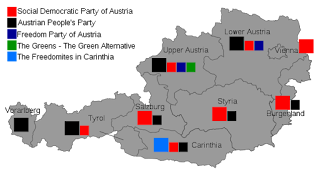Generally, the so called “food law” is used to apply to legislation which regulates the production, trade and handling of food and hence covers the regulation of food control, food safety and other aspects of food trade. Minimum quality requirements are included in the food law to ensure the foods produced are pure and are not subjected to any obtained practices intended to deceive the consumer. In addition, food law should cover the total chain beginning with provisions for animal feed, on-farm controls and early processing through to final distribution and use by the consumer.
The production of milk starts on a dairy farm which is usually relatively close to the market due to difficulties in transportation and preservation.
To produce safe raw milk, dairy farmers should maintain strict cleanliness, check milk and animals regularly and prevent contamination. Dairy farmers should follow basic principles of general cleanliness, as set out in EU regulations. These include:• making sure teats, udders and adjacent parts are clean before cluster attachment
• using pre and post milking teat disinfectants (teat dips and sprays) according to the manufacturer’s instructions
• keeping dip cups and spray devices visually clean
• cleaning excessive dung from floors and stallwork
• keeping milking equipment clean at all times
• examine the milk from each animal at each milking before milking that animal
• separate abnormal milk and do not use it for human consumption
• separate milk from animals showing clinical signs of udder disease and do not use it for human consumption
• identify any animals which are producing milk unfit for human consumption and then mark them to ensure that their milk is kept out of the food chain
To prevent contamination of milk and spreading of germs, the milking area should also fit in to the standards set by the EU regulations. The milking area should be sited and constructed to ensure satisfactory hygienic conditions during milking. The area and immediate surroundings must be kept clean and there should be an adequate supply of clean water in the area for cleaning.
Before milking animals in a cowshed, you should make sure the floor under the cows, dung channels and operator walkways are clean. You should manage these areas during milking to reduce the risk of contamination. Storing milking units in a cowshed is prohibited.
 Milk has to be stored properly as well to prevent its safety before transportation. A milk storage room is considered a food storage area. As such, it should be used only to cool and store milk, and for the cleaning and storage of milking equipment. The room should be clean at all times and must be sited in a clean area, away from obvious sources of contamination.
Milk has to be stored properly as well to prevent its safety before transportation. A milk storage room is considered a food storage area. As such, it should be used only to cool and store milk, and for the cleaning and storage of milking equipment. The room should be clean at all times and must be sited in a clean area, away from obvious sources of contamination.
Milk is defined by the EU as the produce of the milking of one or more farmed animals. Drinking milk is a product intended for delivery or sale, without further processing for consumers, either directly or through intermediaries such as restaurants or hospitals. Drinking milk can be:
• raw - not heated above 40°C or treated for the same effect
• whole - heat treated with the fat content of at least 3.5 percent
• semi-skimmed - heat treated with fat content of between 1.5 percent and 1.8 per cent
• skimmed - heat treated with fat content of 0.5 percent maximum
Milk can be transported in milk cans or bulk tankers, which should be suitable for effective cleaning and sanitization. Generally, milk from small-scale milk producers is transported in milk cans by the producers themselves or by milk collectors (informal traders and intermediaries). Milk collectors usually collect milk cans from several producers and then transport them – by bicycle, animal, vehicle or foot – to local/urban markets, family shops, stands, canteens or small-scale processing plants. Milk in cans is uncooled or barely cooled, so the duration of transport is of primary importance in ensuring the delivery of good-quality milk. An advantage of using milk cans is that the milk from different producers is not mixed, avoiding the risk of spoiling good milk with low-quality batches. The milk produced in large-scale commercial dairy operations is usually transported in bulk tankers. As milk tankers are insulated, the milk is still cool when it arrives at its destination and unlikely to turn sour before reaching a distant processing plant or market.
When the milk is safely obtained, stored and transported to the markets, people can buy and consume the milk without worrying about buying a contaminated product.






